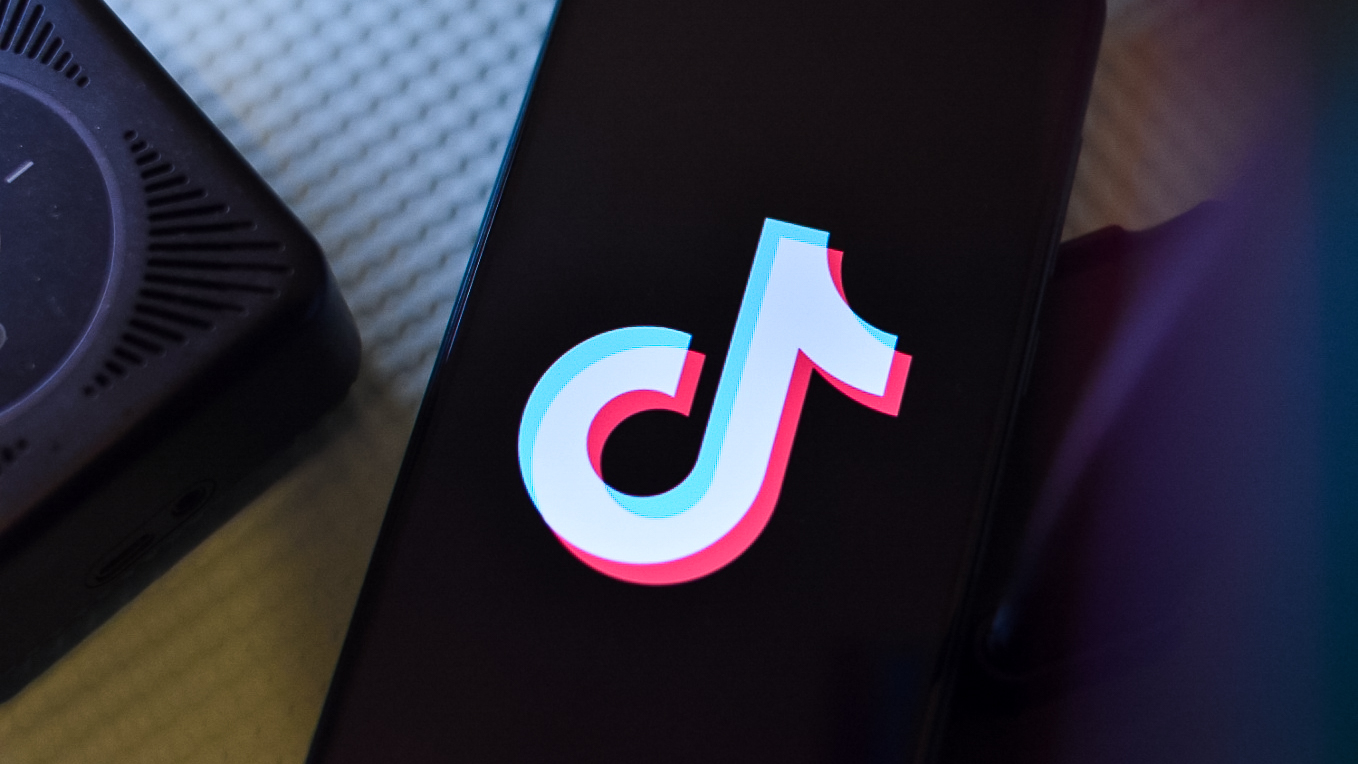Google Pixel 9 Pro vs. Pixel 8 Pro: Smaller size, bigger punch
Google is finally offering users a choice of size without the missing features.
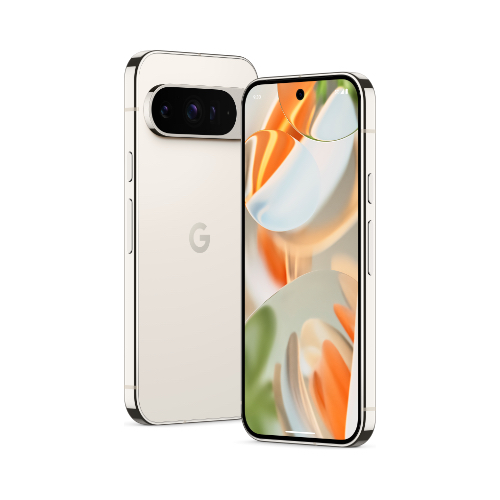
Small, yet mighty
The Google Pixel 9 Pro is the first Pro-level device Google is offering in the same size as the standard-sized Pixel 9. The phone has a rear triple-camera system, a 42MP selfie camera, 16GB of RAM, and the powerful Tensor G4 processor with many amazing new AI features, all in a smaller package than ever.
Pros
- Faster charging
- Brighter display
- Higher-resolution selfie camera
- Faster processor
- More RAM
- Smaller size
- One year of Gemini Advanced for free
Cons
- Smaller battery
- Boxier design
- Ultrasonic fingerprint sensor could conflict with some screen protectors
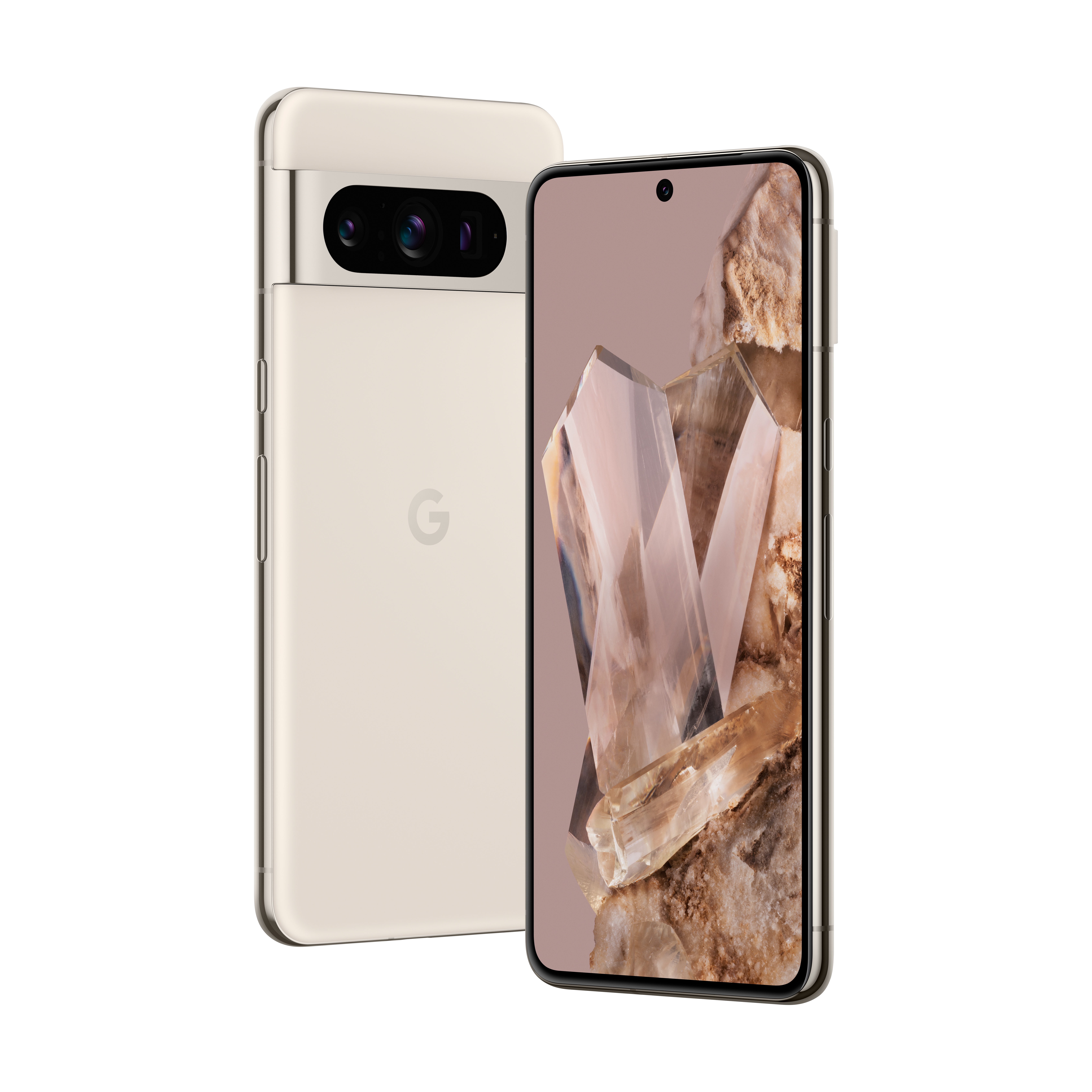
Cheaper with some tradeoffs
Last year's flagship phone is still in the spotlight, thanks to Google's promise of regular updates and feature additions. It's got all the best of Gemini, especially when you pair it with a Google One subscription, plus the award-winning cameras everyone knows and loves.
Pros
- "Friendlier" curved frame
- Bigger battery
- Still gets six more years of updates
- Lower price
Cons
- Selfie camera isn't as good
- Less RAM
- Slower, less efficient processor
- No Satellite connectivity
- Larger (if you don't like that)
- Heavier
This Google Pixel 9 Pro vs. Pixel 8 Pro comparison clearly shows a total overhaul in Google's approach since the release of the Pixel 6. The new changes Google made are fantastic and will impress many. Google gives the Pixel 9 Pro the same hardware and camera specs as the bigger siblings, the Google Pixel 9 Pro XL.
Before, you would have to buy the biggest phone out of the lineup to get the best features and hardware, as we saw with last year's Pixel 8 Pro. Pixel fans have long been waiting for a smaller-sized Pro phone, and Google finally delivered this time with the Pixel 9 Pro.
Most users might not be interested in the Android phone's 128GB storage variant and prefer a larger option. Nevertheless, the Google Pixel model you choose depends on how you use it. Returning to the matter, is it worth upgrading to the 9 Pro if you already have a Pixel 8 Pro? Let's find out.
Google Pixel 9 Pro vs. Pixel 8 Pro: Specs
Category | Google Pixel 9 Pro | Google Pixel 8 Pro |
|---|---|---|
Display | 6.3-inch Super Actua display, 120Hz LTPO AMOLED (1-120Hz), 2856x1280, HDR, 3000 nits, Gorilla Glass Victus 2, 240Hz PWM dimming | 6.7-inch Super Actua display, 120Hz LTPO AMOLED (1-120Hz), 2992x1344, HDR, 2400 nits, Gorilla Glass Victus 2, 240Hz PWM dimming |
Chipset | Google Tensor G4, Titan M2 security module | Google Tensor G3, Titan M2 security module |
RAM | 16GB | 12GB |
Storage | 128GB/256GB/512GB/1TB | 128GB/256GB/512GB/1TB |
Rear camera 1 | 50MP f/1.68, 1/1.31" sensor, Octa PDAF, 82-degree FoV, OIS, 4k/60 recording | 50MP f/1.68, 1/1.31" sensor, Octa PDAF, 82-degree FoV, OIS, 4k/60 recording |
Rear camera 2 | 48MP f/1.7, 1/2.55" sensor, 123-degree wide-angle, macro, autofocus, Quad-PD, 4k/60 recording | 48MP f/1.95, 1/2.55" sensor, 125.5-degree wide-angle, macro, autofocus, Quad-PD, 4k/60 recording |
Rear camera 3 | 48MP f/2.8, 1/2.55" sensor, OIS, 5x optical zoom, Quad PD, 4k/60 recording | 48MP f/2.8, 1/2.55" sensor, OIS, 5x optical zoom, Quad PD, 4k/60 recording |
Rear LDAF sensor | Multi-zone laser autofocus | Multi-zone laser autofocus |
Front camera | 42MP f/2.2, 103-degree wide-angle, autofocus, 4k/60 recording | 10.5MP f/2.2, 1.22um pixels, 95-degree wide-angle |
Connectivity | Wi-Fi 7, 5G (mmWave and Sub-6), Bluetooth 5.3, NFC, AptX HD, USB-C 3.2, Physical and eSIM, Satellite SOS, UWB | Wi-Fi 7, 5G (mmWave and Sub-6), Bluetooth 5.3, NFC, AptX HD, USB-C 3.2, Physical and eSIM, UWB |
Ingress Protection | IP68 dust and water resistance | IP68 dust and water resistance |
Security | In-screen ultrasonic fingerprint module, face unlock | In-screen optical fingerprint module, face unlock |
Audio | Stereo sound, USB-C | Stereo sound, USB-C |
Battery | 4700mAh, 45W wired charging, 20W wireless charging, 5W reverse wireless charging | 5050mAh, 30W wired charging, 20W wireless charging, 5W reverse wireless charging |
Dimensions | 152.8 x 72 x 8.5mm, 199g | 162.6 x 76.5 x 8.8mm, 213g |
Colors | Obsidian, Porcelain, Hazel, Rose Quartz | Matte Black, Porcelain, Bay |
Software support | 7 years of Pixel and OS updates | 7 years of Pixel and OS updates |
Google Pixel 9 Pro vs. Pixel 8 Pro: What's the same
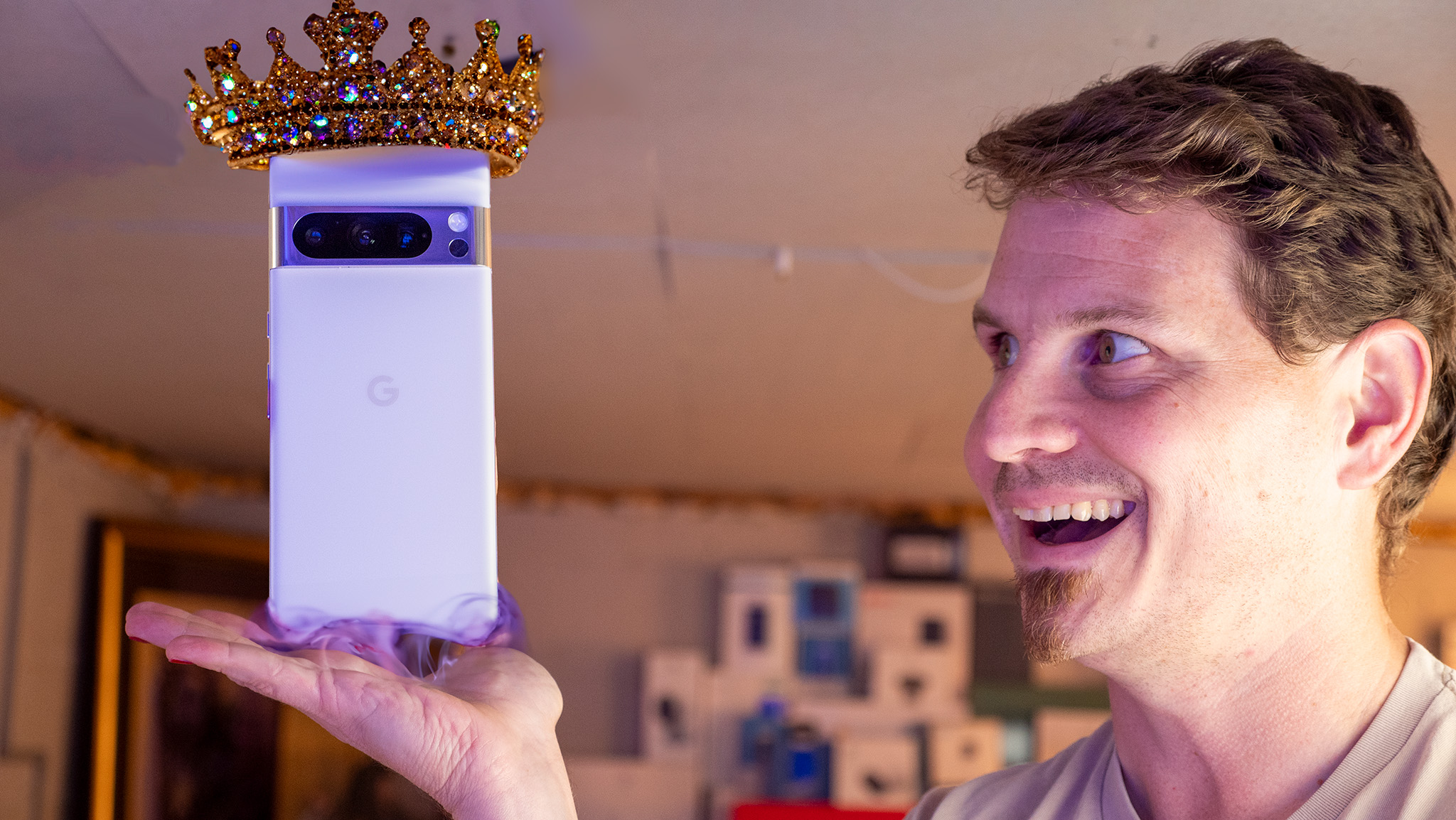
While using them daily, you might not see a core difference between the two Pixels. Other than the Pixel 9 Pro's smaller size, both phones ran Android 14 out of the box with the Pixel experience atop, including the latest Pixel Feature Drop. On the other hand, Google launched the Pixel 9 Pro with a few more features than the Pixel 8 Pro. But we expect many of those to go to Google's older phone, as some already have.
Rear cameras: Google didn't change much in the rear camera setup. Both use the same three camera sensors—a 50MP primary camera, 48MP ultrawide camera, and 48MP telephoto camera behind a 5x optical zoom lens.
The Pixel 9 Pro sports a better ultrawide lens that absorbs more light, but doesn't expect a dramatic quality improvement. Both Pixels have a laser autofocus module with multi-zone focus.
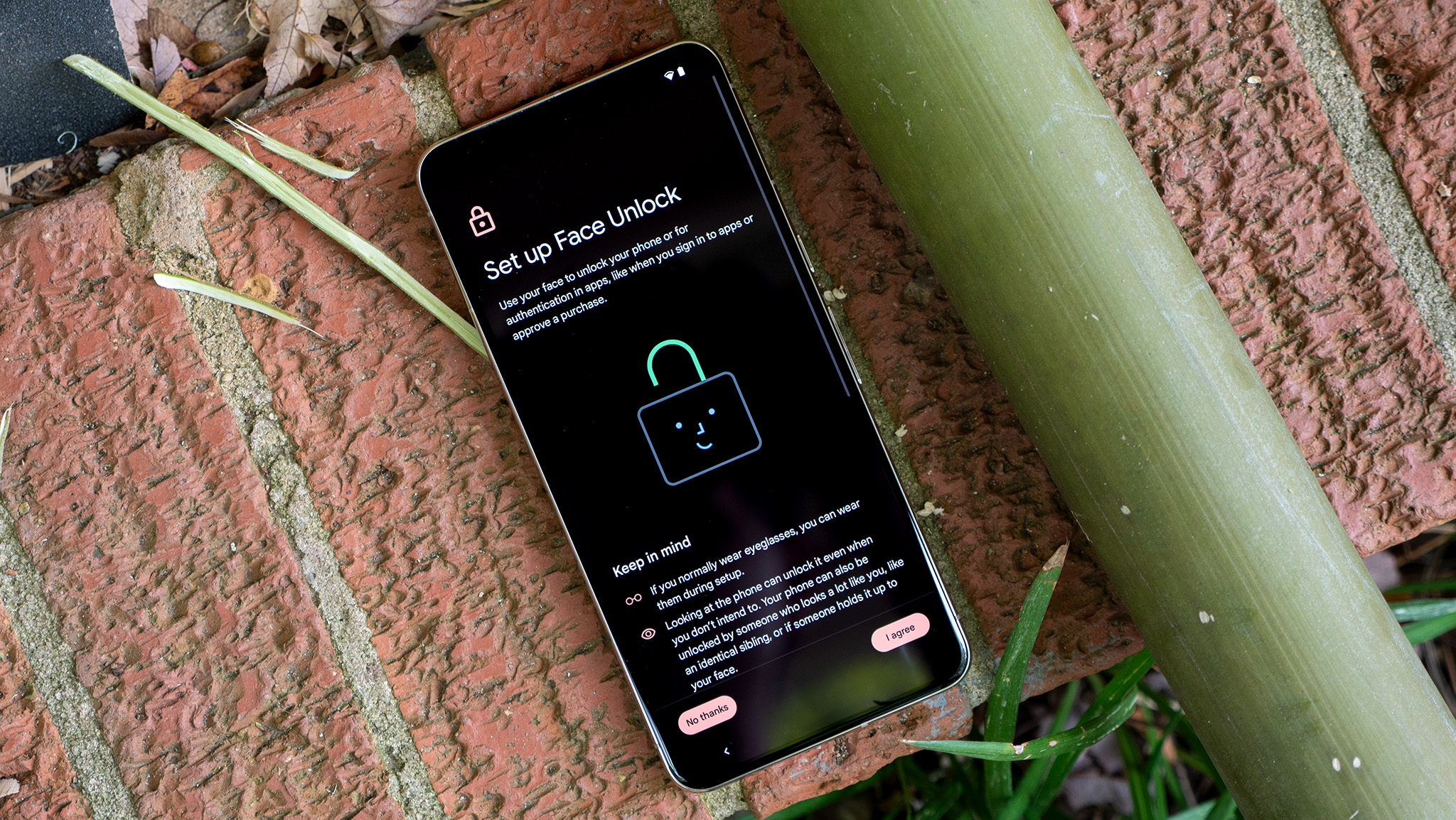
Temperature sensors: Last year, the only way to get the Pixel temperature sensor was to buy the big phone. So it was great to know that Google had fitted the smaller Pixel 9 Pro with that sensor. Google put the sensor on the back of the phone in the camera island. It has FDA approval; you can even scan body temperature whenever needed!
Get the latest news from Android Central, your trusted companion in the world of Android
Storage: The Google Pixel 9 Pro and the Pixel 8 Pro share 128GB, 256GB, 512GB, or 1TB of storage, and neither one has expandable storage via microSD card. Remember to be careful with your storage option since you want to leave some of it for updates and any unexpected files you might need to save on your phone.
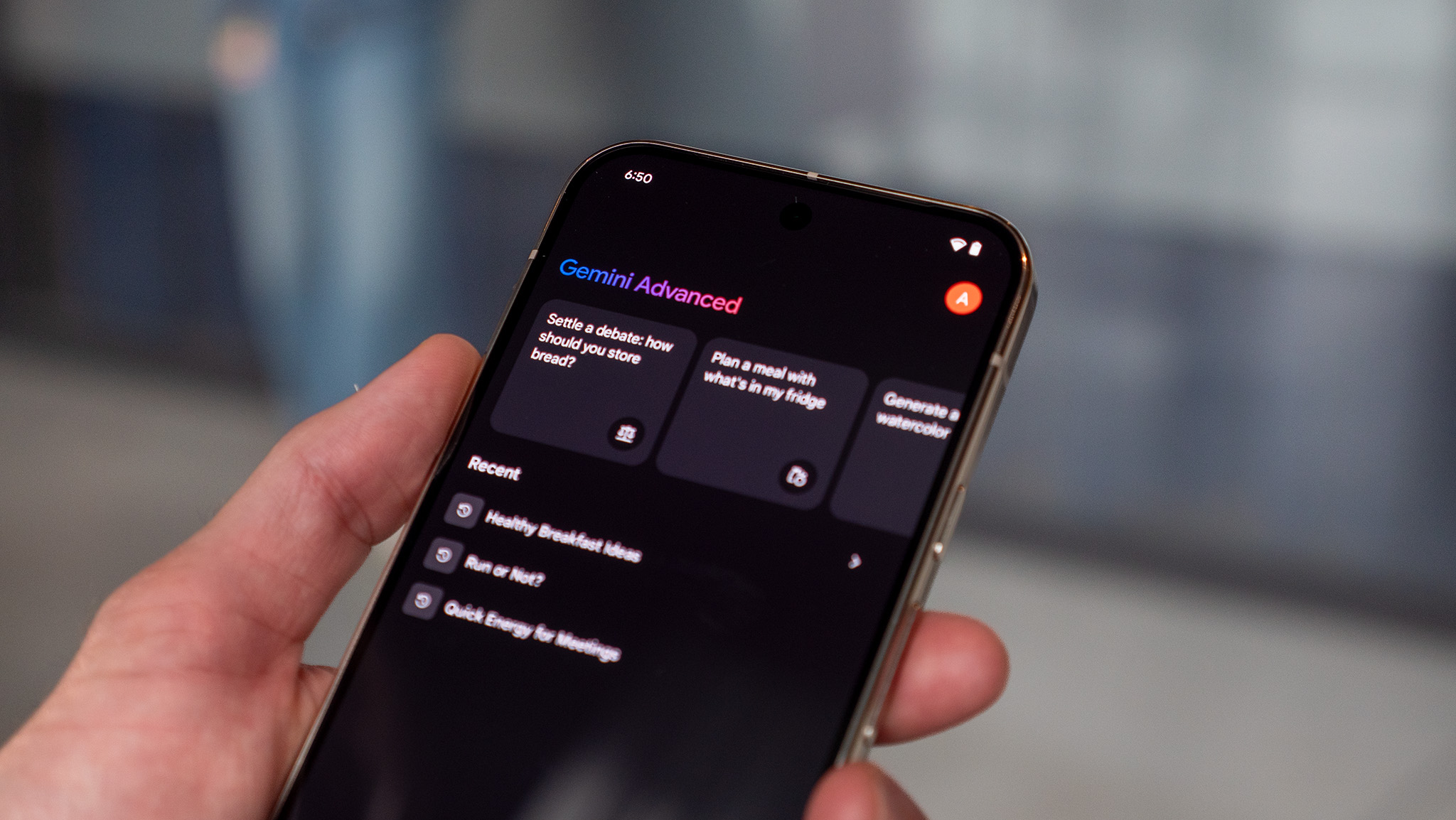
Protection: The Google Pixel 9 Pro and 8 Pro have an IP68 water and dust resistance rating. You can submerge the phone in 1.5 meters of water for 30 minutes. To make your Pixel last even longer, it's best to dry it off with a microfiber cloth as soon as you take it out of the water and not spill harmful liquids on it, such as sugary drinks or cleaning liquids.
Display: Google gave both phones a meager 240Hz PWM dimming rate at all brightness levels. While this likely won't bother most people, folks sensitive to light flicker won't find either phone comfortable. That's especially true of the Pixel 9 Pro, which has an even brighter — and therefore harsher — display.
Connectivity: Both phones have nearly all the same connectivity features. They support Wi-Fi 7 and all types of 5G (with one physical SIM and one eSIM), Bluetooth 5.3, USB-C 3.2 port, and stereo speakers. The Pixel 9 Pro also has satellite connectivity, which I'll cover in the section below.
Software: It's great to share that Google regularly updates your Pixel with new features every few months. Google calls these Pixel Drops, and they add significant value to Pixel phones. You won't have to worry about ending up with an outdated phone since Google gives the Pixel a whopping seven-year update schedule. The update plan also applies to the older Pixel 8 Pro, which is a year old, and you can still expect to see updates for seven years.
Ironically, since the Pixel 9 launched with the same version of Android that the Pixel 8 did — that's Android 14 — support for it will end with the same version of Android years later. That should be Android 21 if the count stays the same between now and then. These are among the first phones to get Android 15 and always get those great features first.
Google Pixel 9 Pro vs. Pixel 8 Pro: All the differences
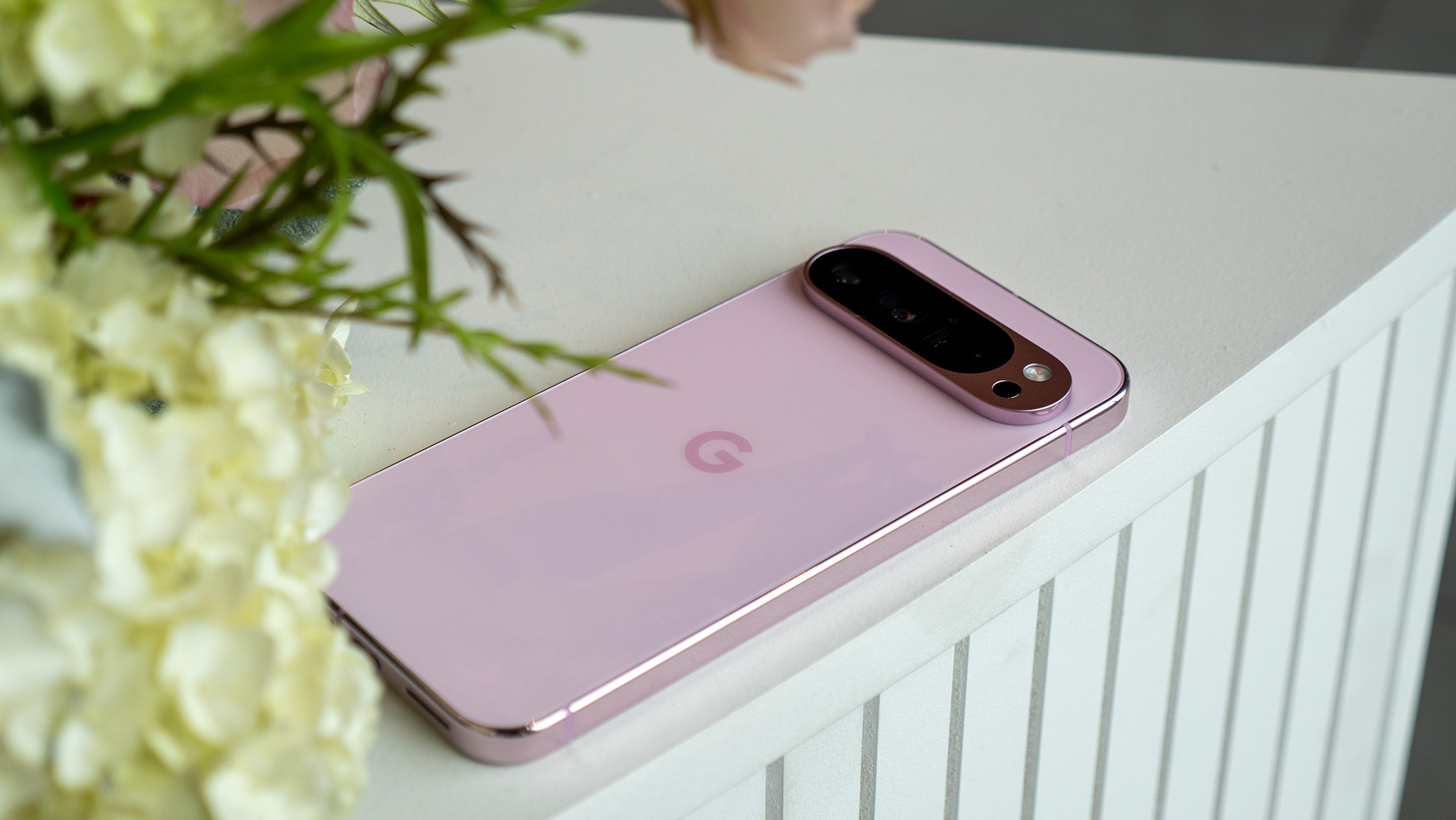
When you use a Pixel, the experience is the same as the Pixel 9 Pro and Pixel 8 Pro. However, Google gave the two phones different looks.
Bold new design: If nothing else, it's easy to spot a Google Pixel phone in the wild. The iconic camera bar sets it apart from every other phone. While Google has iPhone-ified the Pixel 9 series design, it still retains the trademark-centered camera housing.
This time, the camera bar on the Pixel 9 Pro has changed into a camera island, independent from the side rails and prominently sticking out from the back of the phone. The phone has entirely flat side rails, giving you a clear contrast between the flat front and back of the Pixel 9 Pro's more industrial-designed exterior.
By comparison, the Pixel 8 Pro's curves were much more friendly-looking and feeling, with the back glass gently curving into the subtly curved side rails. The back tapered off into thinner side rails, which made the Pixel 8 Pro look thinner. I prefer the Pixel 8 Pro's overall design, and you might too.
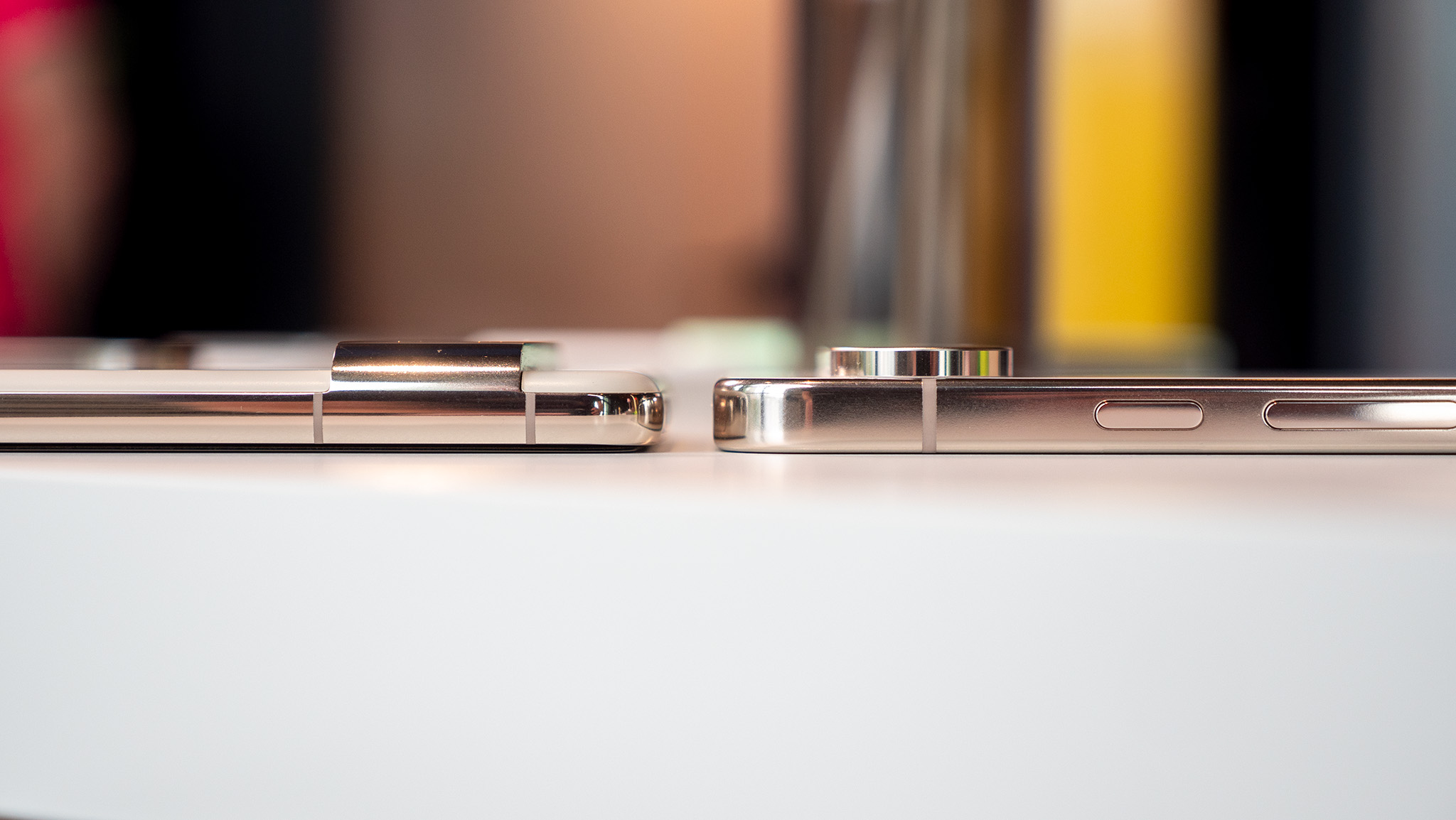
Size: There is a clear difference in size between the two Pixels. With a 0.4-inch smaller screen, the Pixel 9 Pro is more comfortable to use one-handedly than the Pixel 8 Pro. Plus, it is 14g lighter, meaning it's more comfortable for lengthy use on your little pinkie finger.
Anecdotally, users have complained about phones' growing size for years, and Google has finally answered the call by offering the same Pro-level features in the Pixel 9 Pro and Pixel 9 Pro XL. For comparison's sake, the Pixel 8 Pro and Pixel 9 Pro XL are essentially the same size phone.
Display: The comparison of Google Pixel 9 Pro vs. Pixel 8 Pro also shows that Google didn't make the display differ much. The Google Pixel 9 Pro has 3,000 nits of brightness, while the Pixel 8 Pro reaches a peak of 2,400 nits. Neither of these numbers could ever be considered "dim" by any measurement, so while brighter is lovely in the Sun, you'll not likely notice a difference unless you frequently frequent the beach.
SOS: The Pixel 9 Pro is the first Android phone in the U.S. with satellite SOS connectivity, letting you reach out for help even if you're in the middle of nowhere. Depending on your lifestyle, that might be worth the upgrade.
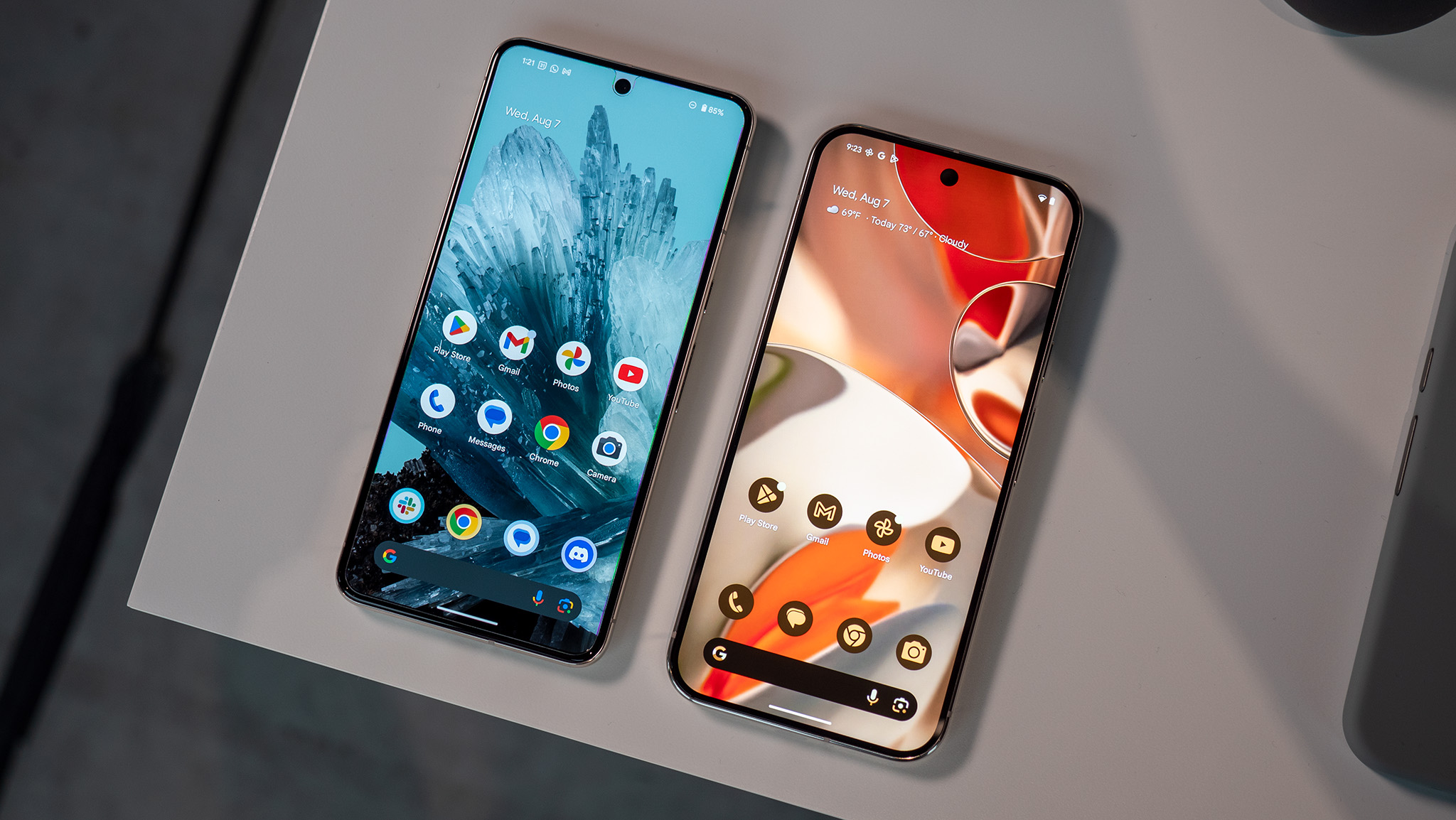
Battery and charging: Due to the size difference between the two phones, the Pixel 9 Pro features a smaller battery than the Pixel 8 Pro—a 350mAh smaller battery, to be precise. The Pixel 9 Pro has a 4,700mAh battery, while the Pixel 9 Pro has a 5,050mAh battery—but two things help offset that difference a bit. First is the charging speed.
With Google's new 45W charger, the Pixel 9 Pro can charge 0-55% in 30 minutes. That's not particularly fast compared to the OnePlus 12, but it beats a Galaxy S24 and is marginally faster than the Pixel 8 Pro.
Processor: The second battery life difference is wrapped up in the processor upgrade on the Pixel 9 Pro. Google says the Tensor G4 is cooler and more effective than the Tensor G3 in the Pixel 8 Pro, which, by comparison, was also cooler and more efficient than the Tensor G2 in the Pixel 7 Pro.
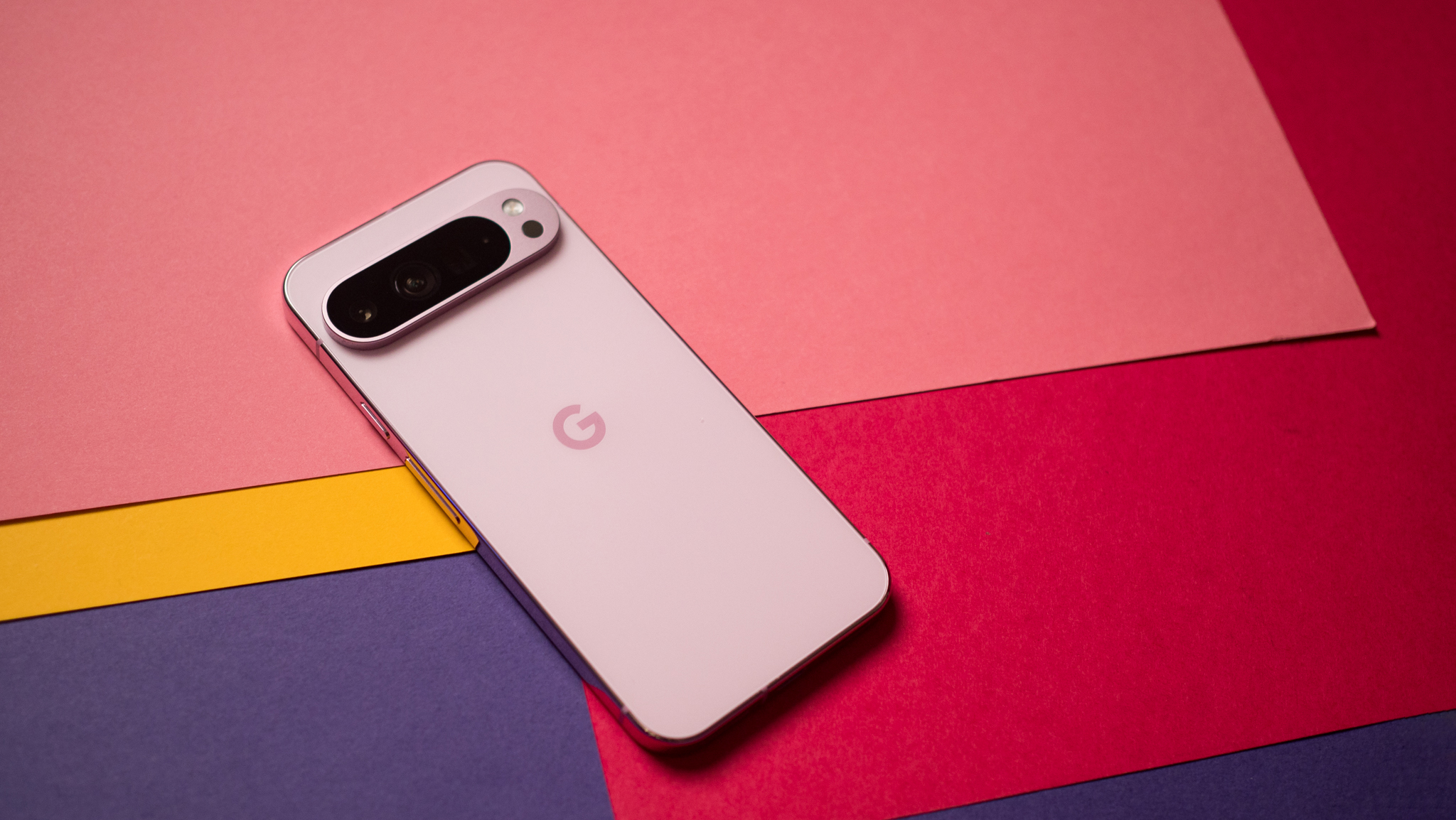
The Pixel 9 Pro and the 8 Pro easily lasted a full day on a single charge. According to our parent company's lab tests on the 9 Pro and Pro XL batteries, both phones took an average of 13 hours to drain their batteries. In contrast, the Pixel 8 Pro's battery was depleted in the same test in 9 hours.
That newer processor is also suitable for more than just better battery life. Tensor G4 can process AI-related tasks 2.25x faster than the Snapdragon 8 Gen 3 in all other flagship Android phones, like the Galaxy S24 Ultra. Given that all the new features Google announced for the Pixel 9 series are AI-related, the Pixel 9 Pro does Pixel things better than any other Pixel before it. Say that three times fast.
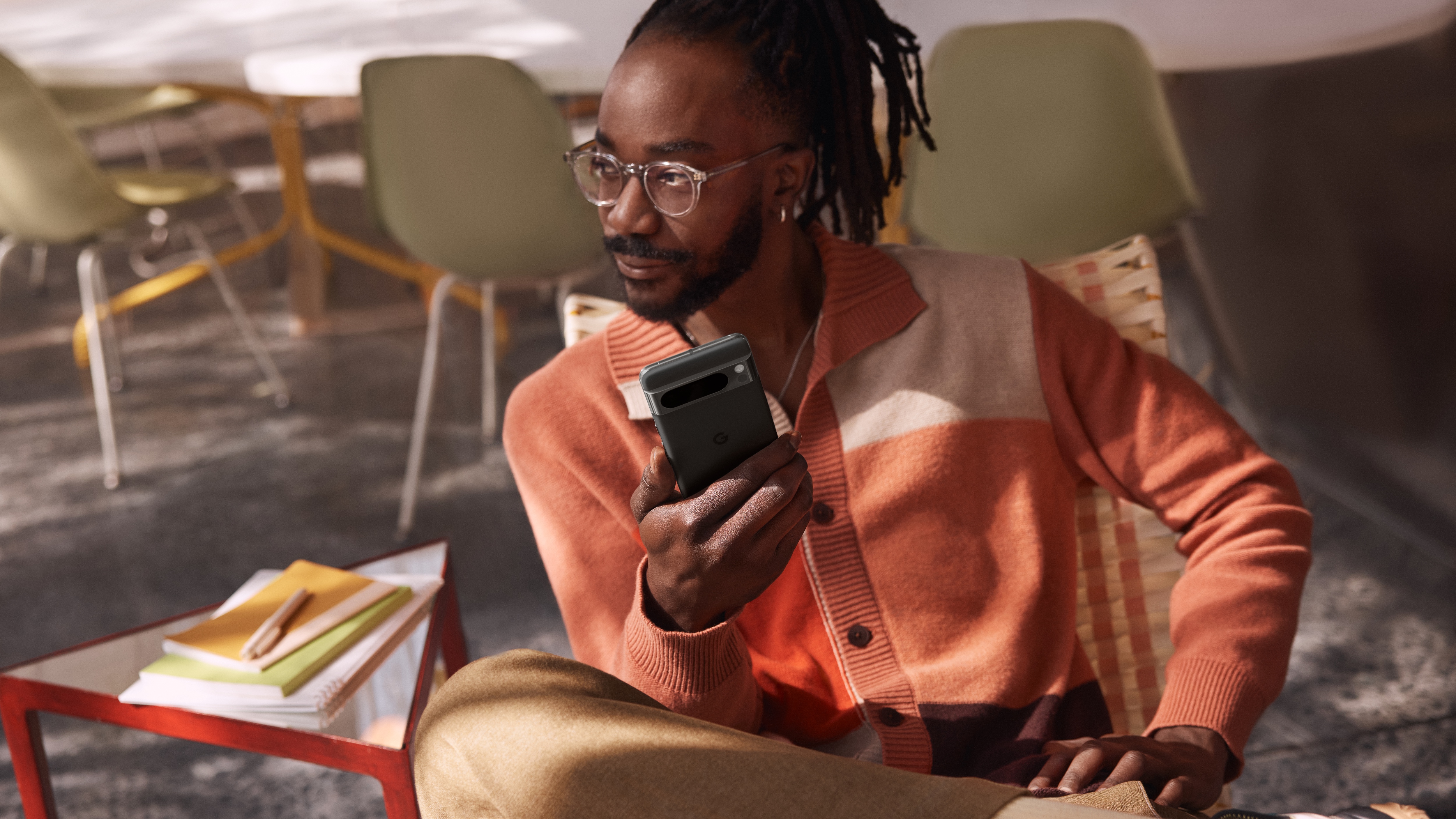
Better multitasking: The Pixel 9 Pro packs in more RAM than any Pixel before it, including the Pixel 8 Pro. We're talking 16GB of RAM versus 12GB of RAM between these two phones, and heavy multitaskers will feel that contrast daily. If you usually use different apps simultaneously, then the Google Pixel 9 Pro is the Pixel for you.
Security changes: Google outfitted the Pixel 9 series with a new ultrasonic fingerprint sensor. Some folks were happy when this rumor appeared a few weeks ago, but I've never had a good time with ultrasonic sensors, mainly when I try to use a tempered glass screen protector. I can't entirely agree that this was a good change, since this can easily be an issue.
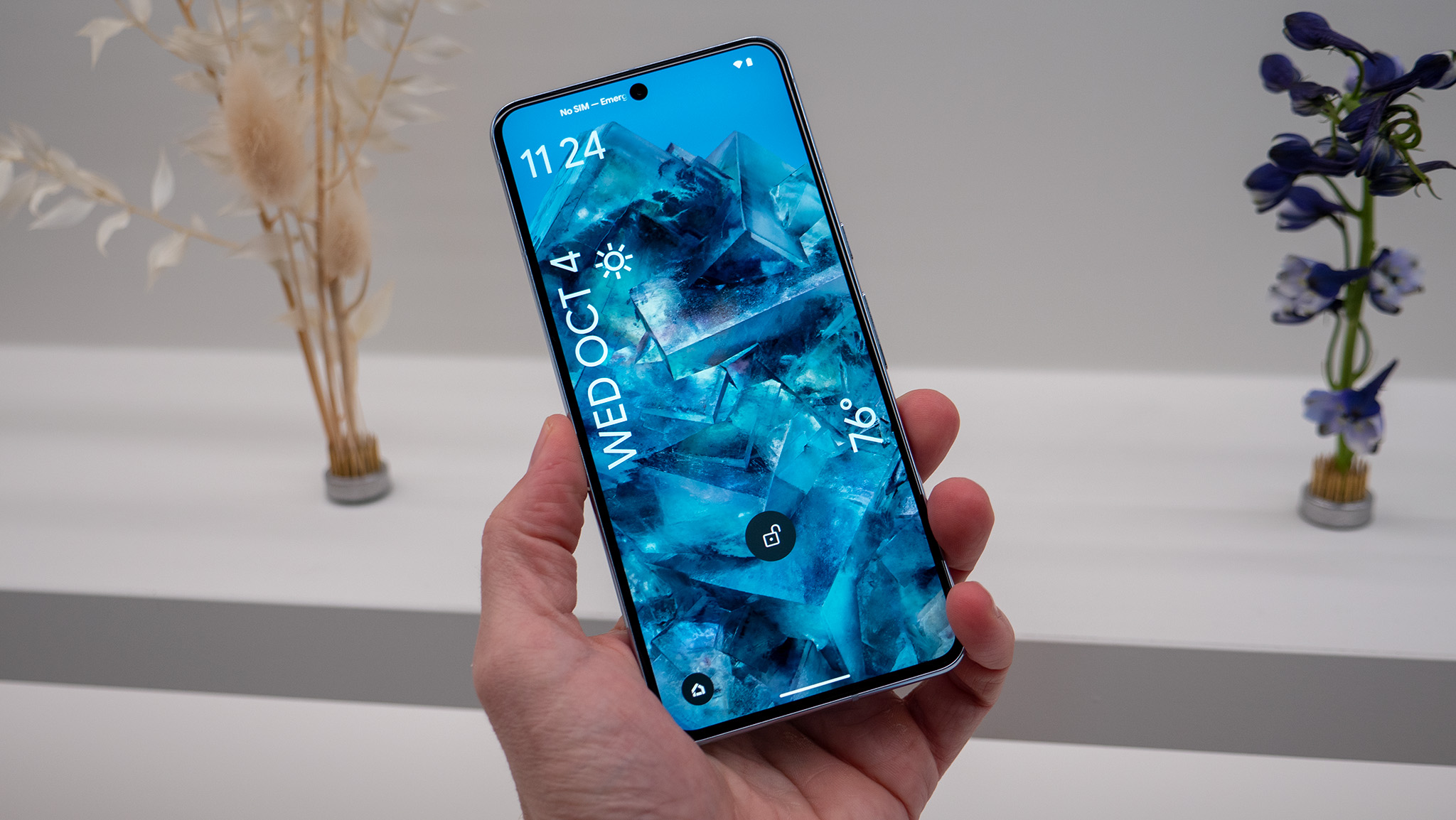
Selfies galore: The improved Pixel 9 Pro's front-facing camera is excellent news for selfie enthusiasts. First, it's quite a bit wider at 103 degrees, meaning you can fit more people into the frame without things getting awkward.
Second, Google improved the resolution, and the new sensor takes in 30% more light than the old sensor. My Pixel 8 Pro camera review showed that last year's camera was pretty good, but this upgrade always helps.
Gemini all the things: Every Google Pixel 9 gets Gemini Advanced for free for a year, which, as you might expect from the name, is Google's most advanced AI engine. As Google's official product support page states, "Gemini Advanced is far more capable at highly complex tasks like coding, logical reasoning, following nuanced instructions, and creative collaboration."
While Gemini is powerful, Gemini Advanced gives you access to the real brains behind the machine. If you're a tinkerer or want to see if AI can do your homework, Gemini Advanced is a key tool for getting the most out of your phone.
You can always pay for Gemini Advanced on a Pixel 8 Pro, but Google only made it available in the $20/month Google One tier, which includes 2TB of cloud storage and some other goodies. For example, thanks to Imagen 3, you can ask Gemini Advanced to create images that you can later add to a profile picture. Gemini Advanced now has options such as 2.0 Pro (experimental), 2.0 Flash, 2.0 Flash Thinking (experimental), and Personalization (experimental).
Google Pixel 9 Pro vs. Pixel 8 Pro: Should you upgrade?
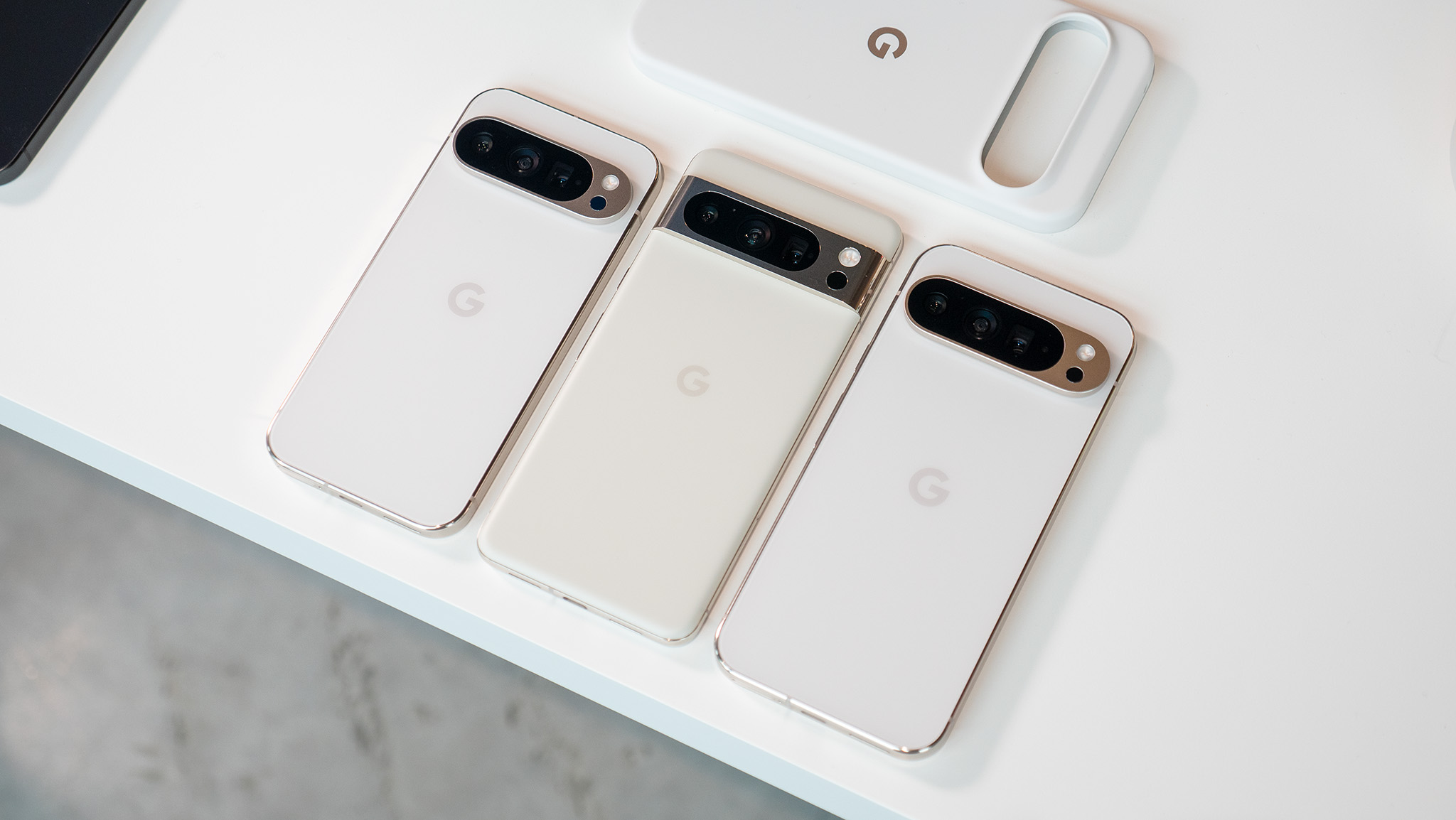
Bigger may not always be better, especially regarding a phone. Previously, you would only get the best features with the biggest phone and powerful hardware. However, Google is changing that significantly with the Google Pixel 9 Pro, the first smaller Pixel phone with Pro-level cameras and features.
If you're already running a Pixel 8 Pro, upgrading to a Pixel 9 Pro makes the most sense if you're tired of having a big phone or spend a lot of time in the middle of nowhere. The upgrade will get you more RAM, a better processor, a brighter display, a better selfie camera, and potentially life-saving satellite SOS connectivity.
The best Google Pixel 9 deals can get you the new phone for a lot less, too, especially if you've got a Pixel 8 Pro to trade in.

Small, yet mighty
A bold new design is just the start of the changes for the Pixel 9 Pro. It's the first Android phone in the U.S. with satellite SOS connectivity, the first smaller Pixel phone with Pro-level features, and the only phone with the award-winning triple camera system on the back.

Cheaper with some tradeoffs
There's nothing wrong with saving a bit of cash and going with last year's phone or just keeping that phone a little bit longer. That's especially true with the Pixel 8 Pro; Google will still send updates until Android 21 arrives. Now that's value!

You must confirm your public display name before commenting
Please logout and then login again, you will then be prompted to enter your display name.
